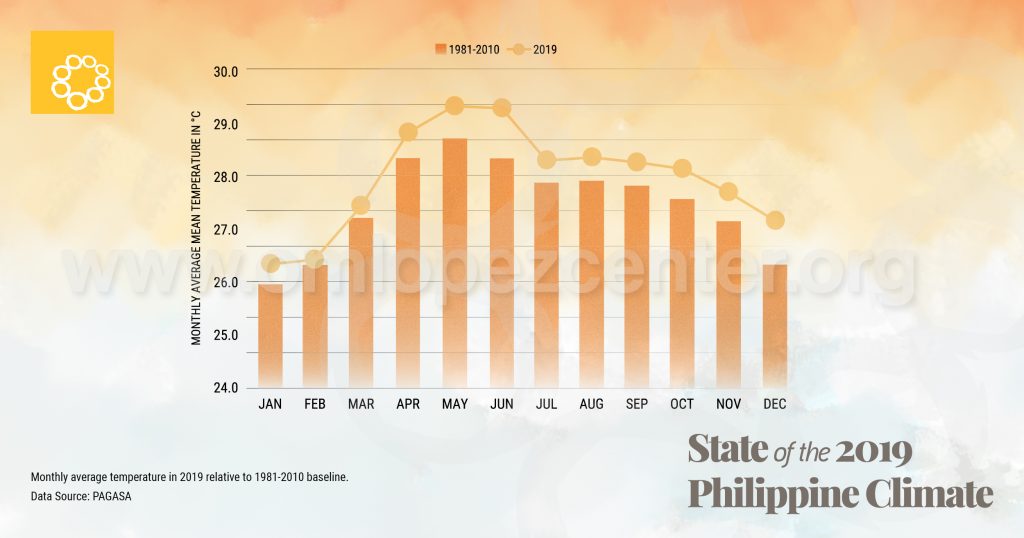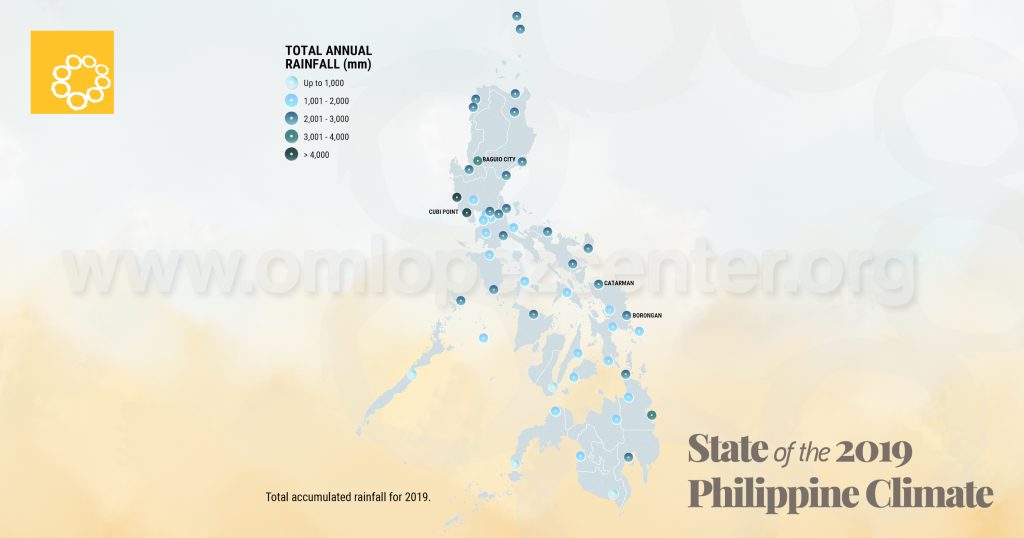State of the 2019 Philippine Climate: Fourth warmest year on record, below-average rainfall amid more tropical cyclones
Warmer temperature and below-normal rainfall despite the increase in tropical cyclones entering the Philippine Area of Responsibility (PAR) were some of the key highlights in the State of the 2019 Philippine Climate.
Produced in partnership with the Philippine Atmospheric, Geophysical and Astronomical Services Administration (PAGASA), the State of the Philippine Climate is an annual report providing a summary of observations on the country’s essential climate variables including notable climatic and weather events. The 2019 report is the latest and the 6th publication of the series.
The 2019 report also gives an overview of the impacts of hydro-meteorological hazards in the country based on data gathered from PAGASA, the National Disaster Risk Reduction and Management Council (NDRRMC), and other institutions.
Continuous warming
The warming trend continues in the Philippines, with 2019 being among the top ten warmest years in the country’s modern record. The 2019 mean temperature was at 28 degrees Celsius (°C) making it the fourth warmest year, surpassing the 27.8 °C recorded in 2018. This is also warmer by 0.5 °C than the 1981-2000 baseline temperature which was 27.5 °C.

Hotter-than-normal conditions were recorded throughout 2019, with May and June being the warmest months. While January remained the coolest month, the average temperature was 0.4 °C higher than normal. Both daytime and nighttime temperatures exhibited above-normal conditions, with hotter-than-normal nighttime continuously being felt by Filipinos since 1996.
Below-normal rainfall
The country generally received below-normal rainfall in ten out of 12 months in 2019, which could be partly attributed to the weak El Niño event early in the year.

The lowest recorded rainfall was observed in October, while above-normal rainfall amounts were recorded in August and December. Tropical Cyclones which entered PAR during these months contributed to the above-normal rainfall amounts.
More tropical cyclones
A total of 21 Tropical Cyclones entered PAR, exceeding the long-term average frequency of 19 to 20 per year. Seven made landfall, with Typhoon Ursula in December affecting the most number of people at around 3.2 million persons. Typhoon Tisoy, which preceded Typhoon Ursula, caused the most damage, amounting to PhP 5.9 billion. Collectively, tropical cyclones last year affected more than six million people and caused a total of PhP 9.6 billion in agricultural and infrastructure damages.
Following its practice of retiring names of tropical cyclones which have caused at least PhP 1 billion in damages and at least 300 deaths in the country, the weather bureau has retired the names “Tisoy” and “Ursula”.